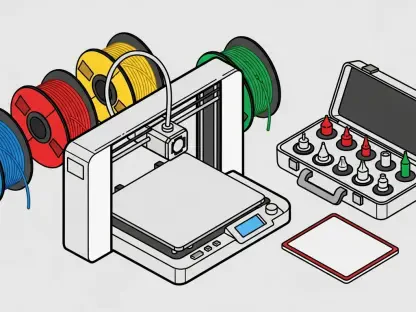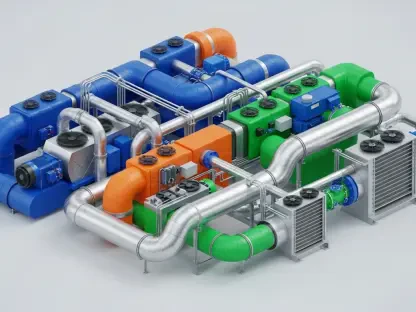Listen to the Article
Downtime is expensive, and maintenance is essential. However, most manufacturing operations still rely on outdated methods to manage their equipment. The current approach is to either wait for something to break or stick to rigid service schedules regardless of actual wear. In 2025 alone, fewer than 35% of maintenance teams’ hours are planned, according to a MaintainX survey of industrial professionals.
That’s where predictive maintenance comes into play. Through leveraging advanced analytics and machine learning, predictive maintenance enables manufacturers to anticipate issues before they cause disruption. Recent data shows this approach can cut unplanned downtime by 50% and maintenance costs by 40%, with many deployments paying back in about three months.
Read this article to explore five concrete ways predictive maintenance is reshaping operations for modern manufacturers and uncover how they can:
Cut unplanned downtime;
Lower maintenance expenses;
Extend the useful life of equipment;
Support smarter, data-driven decisions;
Achieve additional operational gains.
Planned uptime
Downtime remains the bane of every manufacturer. Whether it’s a failed motor on a production line or a jammed conveyor system, unexpected equipment failures ripple across the operation. These cause you to lose productivity, miss deadlines, and sometimes lose customers.
Predictive maintenance uses real-time monitoring, vibration sensors, thermal imaging, pressure gauges, and more to flag early signs of trouble. Instead of reacting to a breakdown, your team gets ahead of it. As a result, uptime increases, and emergency repairs decrease, making operations more predictable and resilient.
Cut Maintenance Costs, Not Corners
“Playing it safe” has a cost, too. Preventive maintenance often leads to over-maintenance, servicing parts that don’t need it, replacing components with plenty of life left, and spending labor hours on unnecessary tasks.
Predictive maintenance turns maintenance into a targeted activity. Instead of relying on fixed schedules (for example, every 90 days), it tells you when maintenance is actually needed based on the equipment’s actual condition.
It tracks things like temperature spikes, pressure changes, or abnormal vibration patterns that signal a part is degrading. This cuts waste without increasing risk and empowers operators to spend less on labor while still keeping machines in top shape. Ultimately, this lowers the total cost of ownership and optimizes resource allocation.
Extend Equipment Lifespan
Much like people, machines perform better and last longer when cared for proactively! Catching wear early and addressing it before it becomes a serious problem helps extend the life of your assets. Predictive maintenance systems can identify early-stage issues like:
Bearing wear in motors;
Imbalance in rotating machinery;
Lubrication degradation;
Electrical insulation failure.
By resolving small issues before they escalate, you reduce the strain on the machine. Over time, this extends the usable life of costly equipment and postpones the need for capital reinvestment—keeping leadership satisfied, since high return on investment remains the most valued objective.
Improve Safety and Compliance
Operational safety has become essential for business continuity. Faulty equipment can lead to injuries, fires, or hazardous material leaks. More pressingly, the reputational and financial damage from a safety incident can be devastating.
Predictive maintenance enhances safety by identifying high-risk conditions before they become dangerous. For example, a spike in motor temperature might indicate overheating that could lead to fire, or unusual vibration could signal a loose part at risk of breaking off during operation.
A drop in pressure might also reveal a leak in a compressed air system. By detecting these anomalies early, predictive maintenance helps prevent incidents that threaten people, products, and the plant itself. It also supports regulatory compliance by automatically maintaining maintenance records and performance logs, reducing the burden of audits. The result is a safer workplace, fewer regulatory complications, and lower liability exposure.
Fuel Data-Driven Decision-Making
With efficient predictive maintenance, every monitored asset becomes a source of valuable data, feeding dashboards and analytics platforms that deliver visibility. This data evolves into a strategic asset. Naturally, operators will gain the ability to forecast budgets with greater accuracy, schedule downtime with precision, and prioritize capital investments based on actionable performance metrics.
Real-World Examples
Your innovative peers are already leveraging modern tools to transform their operations. Explore case studies to inform your efforts and discover results that make maintenance and finance equally happy.
BlueScope Steel
BlueScope Steel shifted from time-based maintenance to Senseye Predictive Maintenance across multiple sites. The system flagged a minor hydraulic leak on a metal-coating line, allowing a planned fix and avoiding at least 24 hours of unplanned downtime on that line. Across the broader rollout, BlueScope reports roughly 2,000 hours of unplanned downtime avoided, fewer process stops, and measurable gains in throughput.
Coca-Cola Hellenic Bottling
This company brought IoT sensors and Siemens MindSphere into its filling operations. Within six months, teams recorded a clear reduction in downtime and averted four unplanned line shutdowns by acting on early warnings. The setup also shortened root-cause investigations and improved the ability to schedule work during low-impact windows.
In a Midsize Plant
Benchmarks from McKinsey show predictive maintenance typically cuts machine downtime by 30 to 50% and extends machine life by 20 to 40%. Applied to a 25-asset environment, those ranges translate into fewer emergency stops, fewer throwaway part swaps, and a maintenance budget that moves from guesswork to evidence.
Getting Started with Predictive Maintenance
Adopting this approach doesn’t have to mean a full systems overhaul on day one. Most manufacturers start with a single production line. They define success clearly and assign a small cross-functional squad with a maintenance lead, a line supervisor, and a data analyst.
Moreover, useful insight depends on trustworthy signals and coherent context, such as duty cycle, load, and environment. Culture shifts toward anticipation as teams expect early warnings, smoother changeovers, and windows that respect production tempo.
Go Beyond Maintenance. Optimize
Predictive maintenance is a strategic lever for operational transformation. For manufacturing decision-makers, it’s a way to shift from firefighting mode to a proactive, data-driven, and performance-focused model.
The question isn’t if you should explore predictive maintenance. It’s how fast you can make it a core part of your operations. Your machines are already talking. It’s time to start listening.









